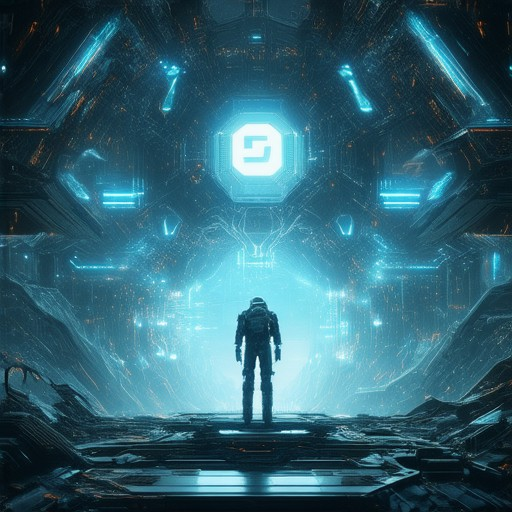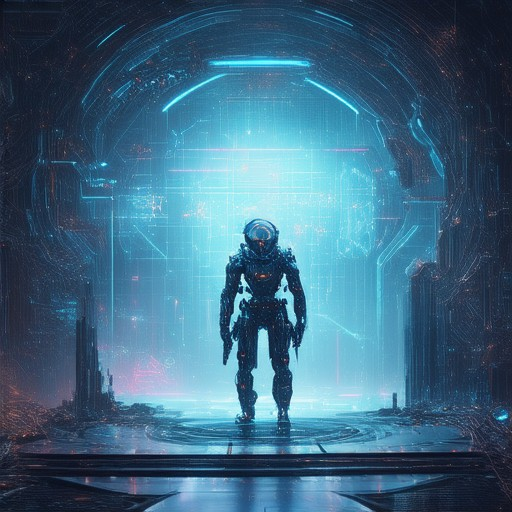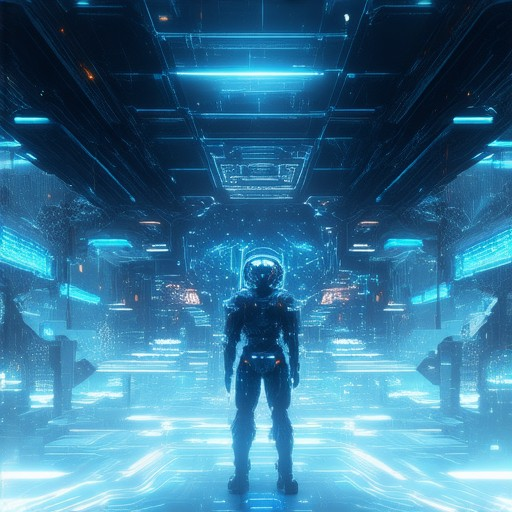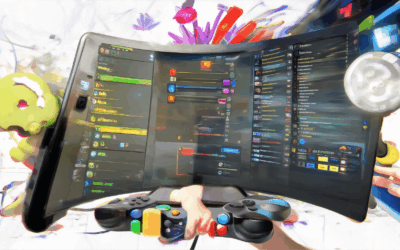Are you considering Blender for your next game project? While traditionally known as a 3D modeling tool, Blender has emerged as a versatile option for game development, offering both flexibility and powerful features that appeal to a wide range of creators. In recent years, Blender has gained traction in the gaming industry, with many developers and artists exploring its potential for creating high-quality 3D assets, environments, and even entire games. From indie projects to AAA titles, Blender is being used in ways that challenge traditional game engines like Unity and Unreal, proving itself as a capable tool for game development. But is Blender truly suitable for creating games, and how does it compare to other tools? In this article, we delve into Blender’s capabilities, its role in AAA game development, and whether it’s a viable choice for your next project. Whether you’re a seasoned developer or a hobbyist, Blender’s open-source nature, customizable workflows, and cross-platform compatibility make it an intriguing option for game creation. Join us as we explore the ins and outs of using Blender for games, its strengths, and its limitations, and discover why it might just be the perfect tool for your next gaming venture.

Is Blender Good for Making Games?
Blender is indeed a versatile tool for game development, particularly for indie developers and small-scale projects. Its robust set of features makes it a valuable asset for creating high-quality 3D assets and animations. Below are some key aspects that make Blender suitable for game development:
Key Features of Blender for Game Development
- 3D Modeling : Create detailed characters, environments, and objects using Blender’s intuitive modeling tools.
- UV Unwrapping : Easily unwrap textures and maps for 3D objects.
- Texture Mapping : Apply and manipulate textures to enhance visual appeal.
- Lighting : Implement realistic lighting setups to bring scenes to life.
- Animation : Create character animations and model movements using keyframes.
Advantages of Using Blender for Game Development
-
- Cost-effective solution for indie developers
Limitations of Blender for Game Development
-
- May require additional plugins for advanced features
Alternative Tools to Complement Blender
- Game Engines : Pair Blender with game engines like Unity or Unreal Engine for level design and asset integration.
- 3D Scanning Software : Use tools like MeshLab for converting real-world scans into 3D models.
- Substance Painter : For creating detailed textures and materials.
- ZBrush : For digital sculpting and creating detailed 3D models.
Resources for Learning Blender for Game Development
- Courses : Check out courses on platforms like Udemy for step-by-step guides.
- Tutorials : Find comprehensive tutorials on YouTube channels dedicated to Blender.
By leveraging Blender’s capabilities and combining them with other tools, developers can efficiently create high-quality games while maintaining creative control.
Is Blender Used in AAA Games?
Blender is widely used in the development of AAA games, thanks to its robust features and versatility. Many artists and designers in the gaming industry rely on Blender for creating high-quality 3D models, textures, and environments. Its open-source nature and extensive plugin support make it a favorite tool for professionals working on large-scale projects.
Benefits of Using Blender in AAA Game Development:
- Flexibility : Blender allows for a wide range of creative freedom, enabling artists to experiment with different styles and designs without worrying about file format restrictions.
- Cross-Platform Compatibility : Blender runs smoothly on Windows, macOS, and Linux, making it accessible to a broad range of developers and studios.
- Compatibility with Game Engines : Blender’s.blend files can be easily exported to various game engines, ensuring seamless integration into production pipelines.
Case Studies:
- Call of Duty Franchise : Blender has been instrumental in creating detailed character models and environment assets for several entries in the Call of Duty series.
- Metro: Exodus : Artists utilized Blender for creating intricate indoor and outdoor environments, leveraging its subdivision modeling capabilities for realistic structures.
Resources for Artists:
For those looking to dive deeper into using Blender for game development, Indie Dev Games offers valuable resources and tutorials tailored for indie developers. Check out their guides on optimizing workflows and learning advanced Blender techniques to elevate your game art.
Blender’s prominence in AAA game development underscores its reliability as a professional tool, empowering artists to bring their visions to life in the gaming world. Whether you’re working on characters, levels, or props, Blender provides the necessary tools to achieve stunning results.
Learn more about Blender’s features and download the latest version .

Does EA Games Use Blender?
Yes, EA Games does use Blender for certain aspects of their 3D modeling and asset creation processes. While EA has its own proprietary tools for larger-scale productions, Blender is employed, particularly in scenarios where flexibility and customization are advantageous. This usage is evident in projects that align with Blender’s strengths, such as collaborative environments and specific creative workflows.

Is Blender Still a Game Engine?
Blender is not a traditional game engine anymore. While it once featured a built-in game engine, it has evolved significantly over time. In earlier versions, Blender included tools for creating games, but these capabilities were eventually removed in Blender 2.8. The game engine functionality is now considered legacy and is no longer actively developed or supported.
The Evolution of Blender
Blender has grown into a versatile 3D modeling, animation, and compositing tool. Its focus has shifted toward general-purpose 3D content creation, making it a favorite among artists, designers, and filmmakers. While it no longer has a dedicated game engine, Blender remains a powerful tool for creating assets that can be used in game development workflows.
Current Features of Blender
Blender offers robust features for: – 3D modeling – UV mapping – Texturing – Rigging and animation – Compositing – 2D design – Game asset creation (using third-party tools and plugins)
Alternatives to Blender for Game Development
If you’re looking for a dedicated game engine, consider exploring alternatives like:- Blender Game Engine Legacy : A deprecated version of Blender that still contains some game development features.- Unity : A popular choice for 2D and 3D game development.- Unreal Engine : Known for high-fidelity 3D games and virtual reality applications.- Godot Engine : An open-source alternative with strong support for game development.
Recommendations for Game Developers
For those interested in using Blender for game development, we recommend:- Exploring Blender Game Engine Legacy for legacy support.- Using third-party plugins like Cycles or HardOps to enhance your workflow.- Checking the official Blender documentation for updates on game development tools.
Blender continues to be a valuable asset for creative professionals, but it is not a standalone game engine. For more resources on game development, visit our sister site at Indie Dev Games .
What Features Does Blender Offer for Game Development?
Blender is a versatile tool for game development, offering a robust set of features that cater to various aspects of game creation. Here’s an overview of its key capabilities:
- 3D Modeling : Blender provides advanced tools for creating detailed 3D models, allowing you to design characters, environments, and objects with precision. Its flexible modeling tools support polygonal, subdivision surface, and mesh editing, making it ideal for complex shapes.
- Animation : Blender excels in animation, offering keyframe animation, rigging, and bone weighting tools. You can create smooth character movements, particle effects, and complex animations, bringing your game characters to life.
- Level Design : Blender is a powerful tool for creating game levels. With its node-based logic and terrain generation options, you can design intricate environments, set up puzzles, and implement game mechanics efficiently.
- Physics and Simulation : Blender’s physics engine supports realistic simulations, including rigid body dynamics, soft body simulation, and fluid dynamics. This allows for realistic interactions between objects in your game.
- Asset Creation : Blender is a complete asset creation suite. You can create textures, materials, and shaders, giving your game a visually appealing look. Its UV unwrapping tools and texture painting functions are highly effective for creating detailed assets.
- Game Engine Integration : While primarily a modeling and animation tool, Blender can be integrated with external game engines like Unity and Unreal Engine through scripts and custom setups, expanding its utility in game development workflows.
- Workflow Customization : Blender’s modular interface allows for extensive customization, enabling you to streamline your workflow. You can create custom panels, shortcuts, and scripts to optimize your game development process.
- Scripting : Blender’s Python scripting capabilities enable developers to automate tasks, create custom tools, and extend the functionality of the software, making it a powerful tool for game development.
Blender is often compared to tools like Unreal Engine and Unity , but its strength lies in its versatility and affordability for indie developers. While these engines might offer more advanced features for large-scale projects, Blender’s flexibility and cost-effectiveness make it a favorite among independent game developers.
By leveraging Blender’s features, you can bring your game ideas to life with professional-grade tools, all while maintaining creative control over every aspect of your project.

Benefits of Using Blender for Game Development
Blender offers numerous advantages for game developers, particularly for indie game creators:
- Free and Open Source: Blender is completely free to use, download, and modify, making it an excellent choice for indie developers on a budget.
- Strong Asset Pipeline: Blender allows artists to create and import various assets, including 3D models, textures, and animations, all within one application, simplifying the workflow.
- Advanced Modeling Tools: With its modifier system, Blender enables highly detailed and complex modeling, perfect for creating intricate game environments and characters.
- Comprehensive Animation Support: Blender provides robust tools for rigging, weight painting, and animating characters, enabling developers to create smooth and lifelike animations.
- Particle Systems and Effects: Blender’s particle system capabilities allow for realistic effects like smoke, water, and explosions, enhancing the visual appeal of games.
- Game Engine Integration: Blender works seamlessly with popular game engines like Unity and Unreal Engine, facilitating real-time rendering and asset exportation.
- Collaborative Workflows: Blender supports team-based projects through its scene management and version control features, making it ideal for larger development teams.
These features make Blender a versatile and cost-effective tool for indie game developers looking to bring their creative visions to life without compromising on quality or functionality.




0 Comments